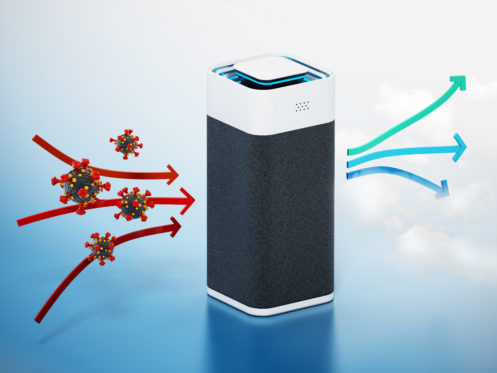10 Proven Ways to Reduce Allergens in Your Home
Having good air quality is one of the most important parts of living in a healthy space. You can enhance air quality by minimizing the sources of irritants and allergens in your house. Some people believe that air pollution can only happen outdoors. However, it can also occur indoors. For instance, any time you open a window or door, you bring outside air inside your home. You can also let in smoke and pollen. Leaks around windows and doors can bring in polluted outdoor air.
Indoor air can contain allergens like pet dander, mold, and dust. Air contaminants may be released into your indoor air by wood-burning fires, candles, and furnaces. Cooking sends fat and oil particles into the air. Also, newly installed furniture and floors can release harmful chemicals into your indoor atmosphere.
Ideally, clean outdoor air should replace your indoor air often. Otherwise, the air becomes polluted, and allergens, smells, and contaminants remain in your home and continue recirculating. Here are proven tips to help minimize irritants and allergens throughout your residence.
1. Clean Your Living Space Regularly
Vacuuming your house once or twice a week can help you cut down on allergens such as pet dander and dust mites. When dusting around your knick-knacks and books, use an electrostatic or microfiber cloth to hold the dust particles instead of only moving them around. Also, remember to use a filter mask when cleaning because dust will stir up in the air as you clean and vacuum your space.
If possible, avoid wall-to-wall carpeting, particularly in your bedrooms. Hardwood flooring (or non-fabric alternatives like vinyl or laminate) is easy to care for since you can see the dust when cleaning. Besides, you can also utilize washable rugs to help reduce allergens while keeping something around that’s soft on your feet.
2. Wash or Change Your Bedding
Dust mites are common allergens in many homes. You can find them in different parts of your living space, such as pillows, bedding, upholstered furniture, and carpeting. Encase your pillows, box springs, and mattress in allergen-proof fabric covers to prevent these air contaminants. Washing your pillowcases and bedding in hot water at least weekly can also eliminate dust mites in your bedrooms. While the bedding and pillowcases are in the wash, ensure you dust the bedrooms thoroughly.
3. Wipe Your Furniture
Invest in furniture pieces that are easy to clean, such as those made from leather, plastic, metal, and wood. If possible, avoid upholstered furniture because it creates a perfect environment for dust, mold, and other indoor allergens, depending on your home’s humidity. To avoid air pollution and boost air quality in your space, wipe your furniture every week after vacuuming.
4. Monitor Your Humidity Level
Climate control also plays a significant role in reducing air pollutants in your living space. When searching for the ideal temperature for your house, remember the air needs to be dry and cool. That’s because humidity and heat create environments that support the growth of mold, mildew, and other microorganisms.
Some allergens like dust mites and mold thrive in warm temperatures, particularly if the warmth is accompanied by high humidity. According to the CDC, you should keep your indoor humidity below 50%. You can invest in a humidity monitor to help you track your home’s humidity levels. If necessary, use a dehumidifier and vent fan to eliminate moisture in your kitchen and bathrooms.
5. Choose Houseplants Carefully
Having some houseplants in your home is beneficial since they help clean your indoor air by absorbing VOCs or volatile organic compounds. However, plants can also collect dust and promote mold growth. Research studies also indicate cross-reactivity between common indoor allergens and indoor plants that make people with allergies sneeze. If you want to bring greenery inside your home, you need to experiment with different varieties to know what works best for you without compromising air quality.
6. Avoid Pet Dander
Like humans, pets spend a lot of time indoors, especially during the winter season. You will find pet allergens in the dander and saliva of dogs and cats, and there is no entirely allergy-free breed. Bathing your pet weekly can help minimize the amounts of dander it sheds, but this isn’t always ideal for the animal — wiping down your pet with a damp cloth when it comes indoors is a workable alternative. If you have animal allergies, washing your hands using water and soap after petting a dog or cat can prevent allergy symptoms from worsening.
7. Check Your Windows
Dust, mold, and other air contaminants can collect on your windows when condensation forms. To prevent these allergens from polluting your indoor air, consider using washable curtains made of synthetic fabric or cotton. Also, use washable shades in place of horizontal blinds that trap dust. Remember to wipe your windows regularly, and consider installing double-paned windows, especially if you reside in a region with a cold climate.
8. Dry Your Basement
Keeping your basement dry can also help eliminate air contaminants in your property. You can use a dehumidifier to reduce molds and other indoor allergens in a wet basement. However, you need to empty and clean it regularly. Repair any leaking pipes in the basement and seal all cracks around the windows and foundation to prevent water from collecting in the space. Also, avoid using carpet on concrete basement floors and store your items away from areas with potential water leaks.
If your basement has mold and mildew, use a mixture of detergent, bleach, and water to clean the surfaces and then dry them completely. However, if the mold covers a large space of your home, consider hiring an expert to inspect your home and eliminate the problem.
9. Remember Your Filters
Allergens such as pollen, pet dander, and dust can lurk in your air ducts. Keeping your air filters in good condition can help reduce these allergens in your indoor air. They also keep debris, dust, and other air pollutants from interfering with your appliances.
Good quality high-efficiency filters also trap air contaminants, preventing them from circulating in your living space. Make sure the filters in your air conditioning system, central heating, and other appliances are clean and in good shape. Experts recommend changing or cleaning your filters every three months to ensure the air circulating in your residential property is as clean as possible.
10. Invest in an air Purifier
Air purifiers clean air by trapping contaminants and pushing the clean, filtered air back into your house. When buying an air-purifying system, you need to consider its filter. According to the EPA, units with a high-efficiency HEPA filter can remove around 99.97% of airborne particles of 0.3 microns in size. These airborne particles include mold, bacteria, pollen, and even dust. When you’re making a choice of what filter to buy, the other feature you need to consider is the CADR, or Clean Air Delivery Rate. The higher the unit’s CADR, the faster it will filter air. Finally, ensure that the unit can handle the space where you intend to use it.
Contact the Air Quality Experts Today
Indoor air contaminants can cause many health complications. You can reduce allergens in your air by keeping your space sealed from all outdoor elements and paying attention to good airflow. To enjoy a healthy indoor environment throughout the year, you can implement the tips presented here. However, if you have problems with your indoor air quality anywhere in Austin, TX or the surrounding areas, reach out to our technicians at Trusted Heating & Cooling.
They have the knowledge, skills, and experience to solve air quality issues and ensure you’re breathing clean air. We install IAQ equipment and offer air balancing and air quality testing. Besides that, you can rely on us for ductwork services and heating or cooling maintenance, repair, and installation. Contact us today to schedule your appointment.


